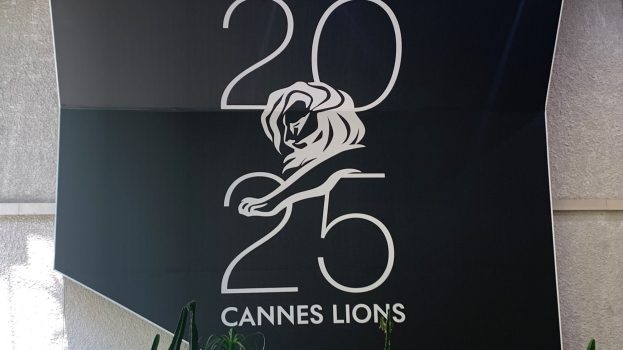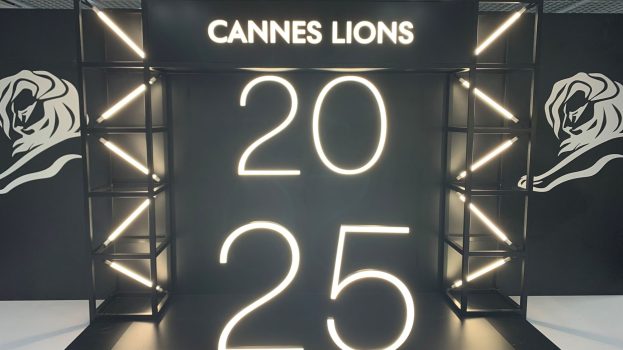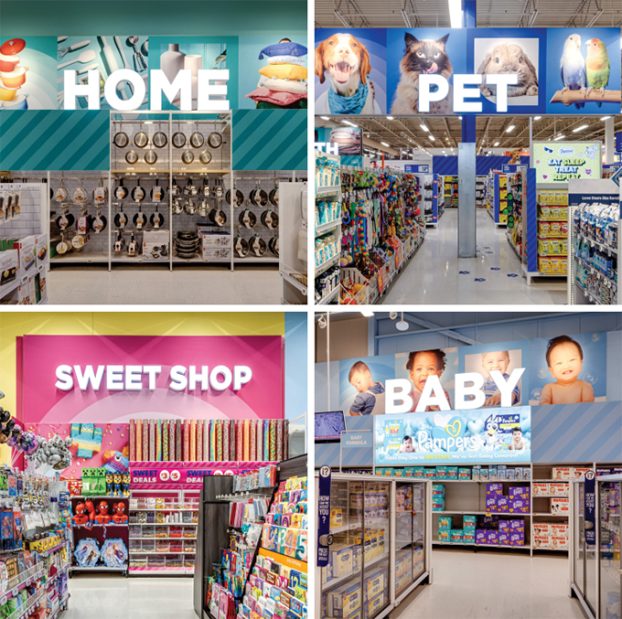History, of course, will decide. But it may well be that Victor Newman’s nose symbolizes a new era in Canadian retail advertising.
Victor, you may recall, is the character from The Young & The Restless who made a memorable appearance last fall in a television commercial for discount chain Zellers. In the spot, Victor unexpectedly breaks the proverbial fourth wall, and begins speaking to the Zellers shopper on the other side of the TV screen, praising her admirable combination of style and thrift. Ardently, he steps closer…only to squash his nose against the lens of the camera.
The ‘Victor’ spot has proven the most popular installment to date in the ongoing series created by Ogilvy & Mather for the Brampton, Ont.-based retailer. This campaign, launched in the latter half of 1998, has garnered considerable praise in the marketing community – and small wonder. Not only does it perform the considerable task of balancing an affordability message with strong branding, it does so in a category seldom noted for the quality of strategic thinking that goes into its advertising.
As a rule, retail clients in Canada have – with a few notable exceptions – tended to treat branding as a secondary consideration when developing their advertising, preferring instead to put the emphasis on price and product.
There is, however, evidence that attitudes are evolving. Certainly the past few years have seen an impressive number of retail campaigns – from clients as varied as Eaton’s, Zellers, Save-On-Foods and Sports Experts – with a significant brand-building component.
‘It’s still the exception rather than the rule,’ says Janet Kestin, co-creative director at Ogilvy & Mather in Toronto. ‘You just have to flip through a newspaper to realize that. But we may be at the beginning of a wave of change.’
Chris Staples, senior vice-president, national creative director with Vancouver-based Palmer Jarvis DDB, agrees that there has been something of a shift during the late ’90s.
‘You can tell something’s up when even Wal-Mart starts to improve its advertising,’ says Staples, who has overseen work on such accounts as Save-On-Foods and A&P/Dominion. ‘They’ve injected real humour into their campaign – I think in response to Zellers – and it has improved about 100%. There’s this new wave of great retail now that uses humour to connect with people by talking about truths in their own lives.’
So why has retail lagged behind packaged goods and other sectors when it comes to brand advertising?
The most commonly heard explanation is that, until the recent past, branding simply didn’t form a major part of the retail mindset. Retailers, so the argument goes, tend by nature to be entrepreneurial types whose major preoccupation is more likely to be with bettering last month’s sales figures than with long-term concerns such as cultivating a brand identity.
‘During the 1970s and ’80s, a new generation of retailers came along who were savvy entrepreneurs,’ says Alan Gee, chairman and executive creative director of Toronto-based Gee, Jeffery & Partners, which has recently earned accolades for its work on behalf of Peoples Jewellers. ‘They were very good at being merchants. But they were very bad at understanding what brands are all about – they didn’t grasp the value of a brand.’
‘Branding just isn’t part of how merchants traditionally think,’ affirms Anne Sutherland, head of Toronto-based consultancy Planning Ahead, which handles account planning for Zellers. ‘They buy stuff and sell stuff. Their focus is on items and the price of those items. That’s their world.’
That world, however, is changing. As Sutherland points out, shoppers today have much more choice than they used to. The same item can readily be purchased at roughly the same price from any number of different retailers. In such an environment, a strong brand becomes a key differentiating factor. Why buy khakis from Gap, rather than any of the other stores that sell more or less the same pair of pants? Well, one reason might be that those cool TV spots with the shimmying dancers communicate something about the Gap brand that appeals to your personal sensibilities.
‘Consumers want more than just the product,’ Gee says. ‘They want to know why they should buy it from you, given that they could buy it in 15 other places. So you have to bring some brand character to the advertising that you do.’
Certainly that’s what Zellers has attempted. Wal-Mart’s entry into the Canadian marketplace five years ago raised the competitive stakes in the discount retail category, forcing the management at Zellers to rethink the chain’s traditional advertising focus on price and product.
Research has shown that their best customers are women with children under the age of 12, Sutherland says. So the current campaign aims a strong brand message squarely at that audience.
‘The Zellers brand is really about being part of moms’ lives,’ she explains. ‘So we set out to charm and disarm mom. We’re telling her that we understand the job of being a mom, and that we are uniquely set up to help with her everyday needs.’
While the Zellers campaign plays up the retailer’s brand image, it doesn’t ignore the price issue. Rather, both elements are integrated into the advertising.
‘Every single spot we do has an affordability message,’ Kestin says. ‘Because Zellers is still a discount retailer in the end. So affordability is critical to what the brand is about.’
Finding some way to incorporate both a price or product message and a brand message into a single campaign is one of the major challenges for retail advertisers. Few players in this category, after all, have the kind of extravagant budgets necessary to do both pure brand advertising and separate tactical campaigns.
‘Our clients need their stuff to sell,’ says Charles Blackwell, vice-president, creative, with Watermark Advertising Design in Calgary. ‘So we do have to get the price and the product in there.’
As a creative, Blackwell maintains that it’s possible to ‘brand within a selling message,’ and has brought this philosophy to bear on work for a number of retail clients, notably Mark’s Work Wearhouse and Ethan Allen Home Interiors.
Watermark’s 1997 print campaign for Ethan Allen, for example, used wry humour to position the home furnishings retailer as an option for those consumers ready to graduate from IKEA to something a little more grown-up. (‘If it comes in a cardboard box and requires hours of fiddling to assemble, it’s called a jigsaw puzzle.’) But, as Blackwell points out, there’s also a product and a price point in all the ads.
Montreal-based agency Bos has taken a similar approach in its ongoing efforts for Sports Experts.
A television campaign for the sporting goods retailer has been running in Quebec for approximately three years now. Each spot follows the same format: a comic vignette, tagged at the conclusion with a price offer.
‘It’s a marriage between image and promotion,’ says Michel Ostiguy, president of Bos. ‘And it works. The results have been there from the very beginning.’
As in any other category, effective retail brand advertising begins with a thorough understanding of what the brand in question stands for.
‘You’ve got to dig into the roots of that brand personality,’ says Peter Lanyon, chairman and chief creative officer of Vancouver-based Lanyon Phillips Communications. ‘If you’re a psychiatrist trying to understand what makes a patient tick, you go back into their childhood. It’s the same with brand building.’
That, at least, is how Lanyon Phillips approached the re-branding of Army & Navy Department Stores, a Vancouver-based discount chain. Lanyon says the first step in developing the campaign, which plays heavily upon the 80-year-old retailer’s slightly eccentric character, was to get to know Army & Navy and its management.
‘We spent a lot of time actually in the store,’ he says. ‘And we found all sorts of odd and surprising products that they were carrying. That’s what led us to the tagline: ‘You won’t believe what’s in store.”
So will this new wave of retail brand advertising continue to gain strength? That remains to be seen. As Chris Staples points out, retailers are generally more receptive to the idea of brand building when times are prosperous. ‘I’m dreading the next recession,’ he says. ‘Because there’s this knee-jerk reaction, when sales are down, to start screaming price at consumer. I’ve seen the cycle happen time and again. And as a creative, all you can do is wait it out. You try to dial up the price component in the advertising, without losing the brand aspect.’
Also in this report:
– For the love of a good book: Indigo founder Heather Reisman couples a passion for the written word with a determination to inspire, inform and indulge the reading public p.B3
– Color Your World touts decorating ‘solutions’: Chain taps do-it-yourself craze with stores that offer expanded product range in comfortable environment p.B6























